2019 IEEE Control Systems Society Workshop on Active Disturbance Rejection Controller
2019 IEEE Control Systems Society Workshop on Active Disturbance Rejection Controller
Organizers: Zhiqiang Gao and Lili Dong
Center for Advanced Control Technologies
Cleveland State University
July 2, 2019
The 2019 CACT Tutorial and Workshop on active disturbance rejection controller (ADRC) was held at Cleveland State University (CSU) on July 2, 2019, from 9 am to 5 pm. Dr. Lili Dong, chair of IEEE control systems society Cleveland chapter, hosted the event. Thirty eight people attended the workshop, including faculty members and students from CSU and Case Western Reserve University, scholars from Chinese Academy of Sciences, Southeast University, South China University of Technology, and North China University of Electric Power, and researchers from NASA Glenn Research Center. Engineers from local companies such Bendix also attended the workshop.
Mr. Steven Galecki, Chair of the IEEE Cleveland Section gave the opening remarks, introducing IEEE and the ADRC research program at CSU. Mr. Jack Kraszewski and Ben Ward from the CSU Research Office then introduced the CSU research programs and mechanisms for industry collaborations. This has led to follow up discussions right after the workshop between CSU and local companies.
An ADRC tutorial was given by Dr. Zhiqiang Gao from CSU, titled “ADRC: 20 years in the making”, where he traced an indomitable idea from Dr. H.S. Tsien as it passes through the hands of Dr. Guan Zhaozhi, and materialized as ADRC by Dr. Han Jingqing some 20 years ago. Dr. Gao showed, with two undisputed examples, what ADRC made possible that would otherwise be impossible, together with a full agenda for current and future research.
Dr. Wenchao Xue from Chinese Academy of Sciences continued with the tutorial, focusing on the crucial design of ESO and its various forms and improvements. Most interesting is how you can add disturbance rejection to an existing design without modifying its structure or parameters; how to deal with time delay; how to optimize its parameters in real time. Later, on the theoretical side, Dr. Sally Shao from CSU showed how an area of mathematical study, singular perturbation, matches the nature of ADRC perfectly and provides an elegant mathematical proof of why ADRC is so effective as an engineering solution. She reminded the audience, with two engineering examples, that successful practice of ADRC could, and should, be accompanied by mathematical analysis. Also on the theoretical side, Dr. Wen Tan from North China University of Electric Power shows how any controller in the form of transfer function can be implemented, potentially improved, in the form of ADRC. In other words, ADRC can be seen as a general framework in which other designs can be implemented and enhanced. Dr. Xiangyang Li from South China University of Technology took this one step further as he gave for the first time, as far as we know, a general form of PID for the nth order process, with potentially profound implications. Dr. Li used an ancient Chinese poem to remind us that, in order to see better and further, one needs to climb higher, to the plateau of ADRC.
The application side of workshop covers many aspects of engineering practice. Dr. Frank Li from Youngstown State University discussed the power electronic problems in industry and in space, using an SBIR project featuring ADRC solution as an example.
Dr. Lili Dong from CSU extended the applications of ADRC from conventional mechanical systems to micro-systems. Particularly she successfully employed a nonlinear ARDC to an electro-statically actuated micro-electro-mechanical device, and significantly enlarged the travel range of the micro-actuator to its most extent. Dr. Li Sun from Southeast University presents several ADRC solutions to the power and energy systems. Dr. Qinling Zheng from Samsung showed how 20%+ energy saving is obtained in server farm using the ADRC solution to obtained tighter temperature regulation, thus allowing hotter operations and more natural heat dissipation. Anusree Mandali, the only student presenter, discussed her latest research on voltage regulation and disturbance rejection in power system operations.
What perhaps standout in this event has been the participations from engineers, such as those from NASA and Bendix etc., in most if not all presentations. Their sharp and pertinent questions bring the context on which the discussions are grounded. They are particularly illuminating for the academic researchers.
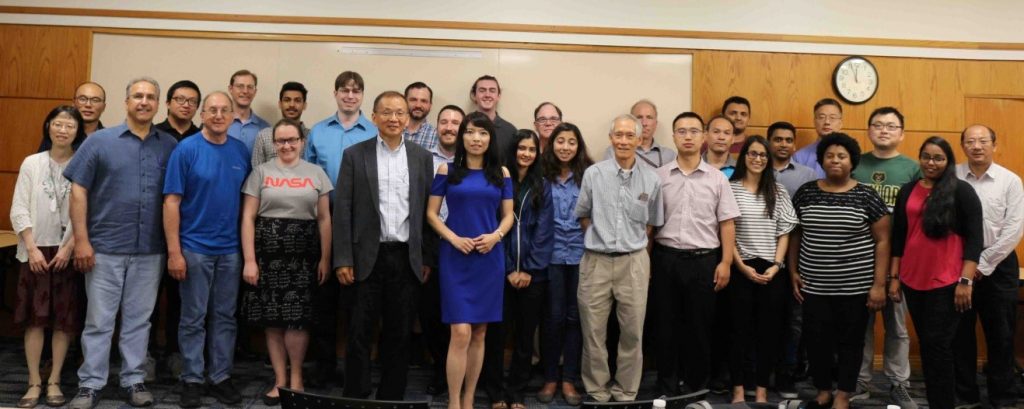
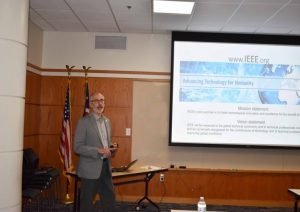
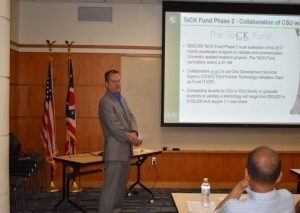
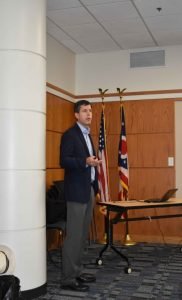

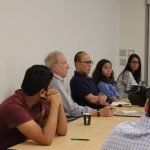
Acknowledgement: The organizers would like to thank the IEEE Cleveland Section and the CSU Research Office, as well as all the speakers and participants, for their support of this event.